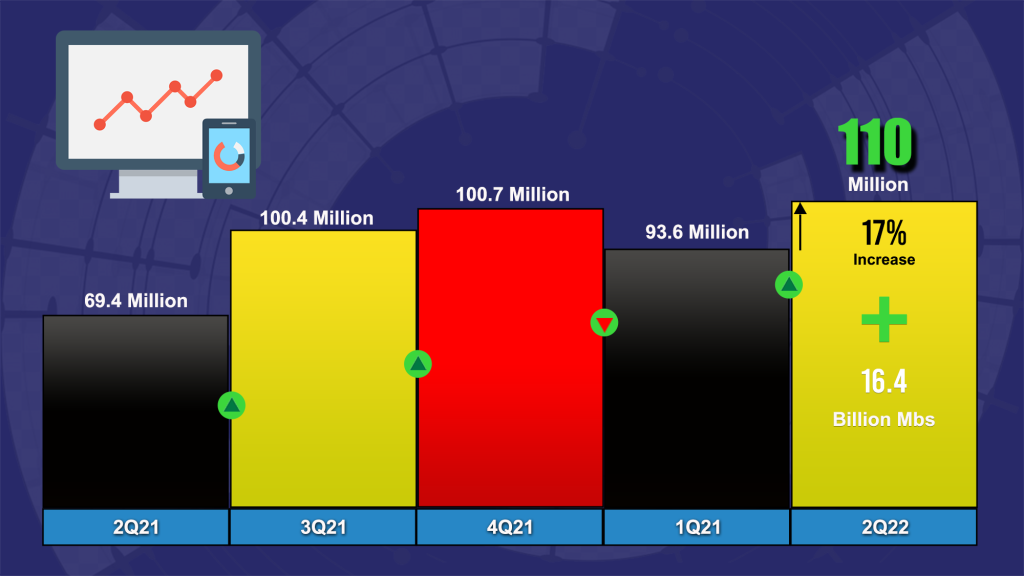Two hundred and thirty-two thousand (232,000) new internet broadband subscriptions were recorded between April-June 2022, bringing total broadband connections in Uganda to 23.7 million, the industry regulator, the Uganda Communications Commission (UCC) market performance report indicates.
ALSO READ: WhatsApp rolls out Communities, in-chat polls, 1k group members, and more
In a year-on-year comparison, the 12 months ended June 2022 recorded 1.9 million new broadband subscriptions – an 8% year-on-year growth in internet broadband subscriptions, says the quarterly report. In terms of penetration, the 23.7 million broadband subscriptions translate into a broadband penetration of 55 internet connections for every 100 Ugandans. “The 232,000 new broadband connections are 34% of total new telephone connections. The growth in new broadband connections may be attributed to new smartphone promotional device activity during the quarter,” the report states.
On the other hand, fixed and mobile subscriptions grew by more than 690,000 new subscriptions during the period under review, bringing the total number of subscriptions to 31.3 million at the end of June 2022. The report further indicates that over 12 months (June 2021-June 2022), 2.4 million new telephone subscriptions were recorded – an 8% year-on-year growth, which translates into a national telephone penetration of 73 lines for every 100 Ugandans.

On internet broadband traffic, the report indicates that the 110 billion MBs of internet traffic recorded in the quarter was the highest volume of internet traffic ever recorded in a quarter. This represented a 17% increase from the 93.62 billion MBs recorded at the end of the first quarter (March 2022). “This growth is largely indicative of increased broadband usage rather than an increase in broadband subscriptions. In percentage terms, the growth in internet traffic is 17 times the growth in broadband subscriptions realized during the quarter,” the report explains. The growth in internet usage, the report observes, is consistent with the trend of data-led consumption becoming more popular than traditional voice traffic, as well as the growth in streaming services.


